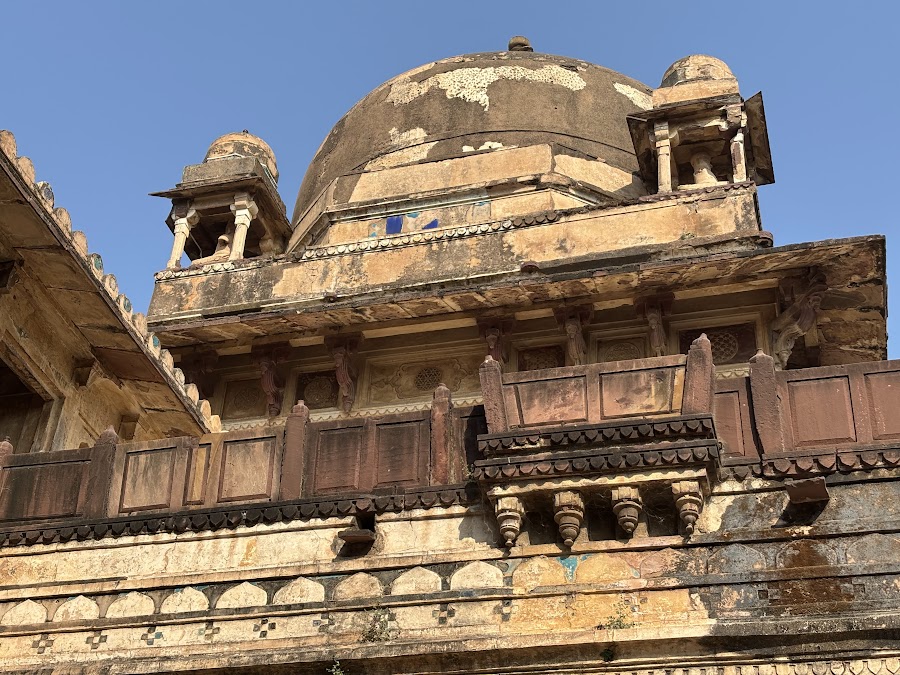
Jahangir Mahal
Orchha, India
- Admire the blend of Mughal-Rajput styles.
- Capture panoramic views from the palace balconies.
- Discover the royal history and cultural significance.
- Explore the intricate carvings and architecture.
- Walk through the courtyards and chambers.
Known for:
Description:
Jahangir Mahal, a magnificent palace in Orchha, India, is a stunning example of Mughal architecture blended with Rajput influences. Built in the 17th century by Raja Bir Singh Deo, it was intended as a gesture of welcome for the Mughal Emperor Jahangir during his visit. The palace features intricate carvings, delicate latticework, and vibrant blue tiles, creating a visually captivating experience. Its three-storied structure offers panoramic views of the surrounding landscape, including the Betwa River and the Orchha Fort complex. Exploring the palace's courtyards, balconies, and chambers provides a glimpse into the opulent lifestyle of the Mughal and Rajput rulers. The palace stands as a testament to the architectural prowess and cultural exchange of the era, making it a must-visit destination for history enthusiasts and architecture lovers.
History:
The Jahangir Mahal was constructed in the early 17th century by Raja Bir Singh Deo of Orchha as a symbol of friendship and alliance with the Mughal Emperor Jahangir. The Bundela Rajput ruler held great respect for Jahangir, and the palace was designed to impress the emperor during his stay. The palace served as a temporary residence for Jahangir during his visit to Orchha. Its construction reflects a blend of Mughal and Rajput architectural styles, showcasing the cultural exchange between the two empires. Despite its grand design and purpose, Jahangir's visit was brief, and the palace later served as a royal residence and a testament to the Bundela-Mughal relations. Today, it stands as a historical landmark, attracting tourists and researchers interested in the rich history of the region.